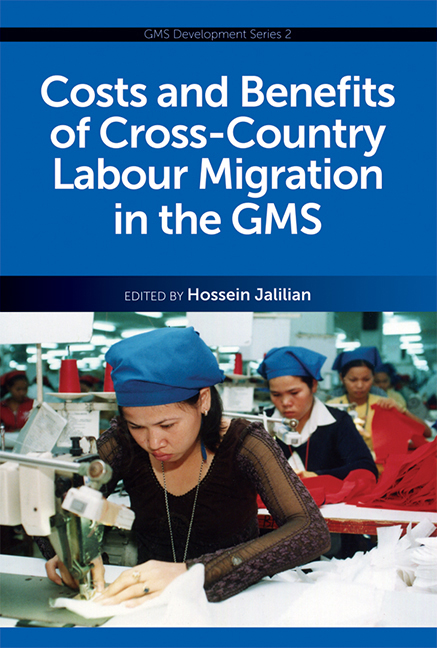Book contents
- Frontmatter
- Contents
- Acronyms and Abbreviations
- List of Figures, Tables and Boxes
- List of Contributors
- 1 Migrants of the Mekong: Wins and Losses
- 2 Economic Costs and Benefits of Labour Migration: Case of Cambodia
- 3 Economic Costs and Benefits of Labour Migration: Case of Lao PDR
- 4 Economic Costs and Benefits of Labour Migration: Case of Thailand
- 5 Economic Costs and Benefits of Labour Migration: Case of Vietnam
- 6 Migrants of the Mekong: Lessons
- Index
3 - Economic Costs and Benefits of Labour Migration: Case of Lao PDR
Published online by Cambridge University Press: 21 October 2015
- Frontmatter
- Contents
- Acronyms and Abbreviations
- List of Figures, Tables and Boxes
- List of Contributors
- 1 Migrants of the Mekong: Wins and Losses
- 2 Economic Costs and Benefits of Labour Migration: Case of Cambodia
- 3 Economic Costs and Benefits of Labour Migration: Case of Lao PDR
- 4 Economic Costs and Benefits of Labour Migration: Case of Thailand
- 5 Economic Costs and Benefits of Labour Migration: Case of Vietnam
- 6 Migrants of the Mekong: Lessons
- Index
Summary
INTRODUCTION
One of the most significant effects of regional economic integration is migration for the purpose of employment. The number of international labour migrants has increased rapidly over the past decade. According to the Asian Migrant Centre (AMC), there were at least two million migrants in the GMS in 2004. Many previous studies observed that migrants generally move from countries with relatively low income levels such as Cambodia, Lao PDR, Myanmar, and Vietnam, to those of higher economic standing, such as Thailand. Economic reasons are identified as the main determinant of such movements. The city of Bangkok in Thailand is regarded as the hub of labour migration in the GMS. However, there is currently no accurate figure for the number of migrant workers in the city. As a result of the migrant registration scheme conducted by the Thai Government in 2004, there were approximately 1.3 million registered migrant workers in Thailand by said year. The biggest share (72 per cent) came from Myanmar, followed by migrant workers from Lao PDR and Cambodia (14 per cent from each). Like their geographic neighbours, Thai people also move to higher income countries. However, Thai labour migration is typically to countries outside the GMS such as South Korea, Taiwan, Hong Kong, and Singapore, among others.
Labour migration is a significant phenomenon that is transpiring as a result of regional economic integration processes in the GMS. This phenomenon attracts considerable attention and interest from many stakeholders and associated parties. At present, there are a number of research works and publications that focus on this issue. However many questions still remain unanswered, especially regarding the economic costs and benefits of labour migration and its effect on the local economy. For example, the financial cost of labour migration for the individual is yet to be fully understood, and so is the effect of their earnings on the local economy. This chapter seeks to help fill this research gap. It also explores other migration related trends and issues pertaining to the case of Lao PDR, with the aim of advancing policy recommendations.
- Type
- Chapter
- Information
- Costs and Benefits of Cross-Country Labour Migration in the GMS , pp. 190 - 241Publisher: ISEAS–Yusof Ishak InstitutePrint publication year: 2012

